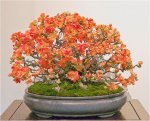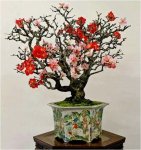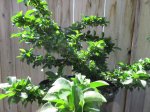The ones you are talking about (as in your pic) are Chinese flowering quince. Chaenomeles speciosa. The Japanese flowering Quince is Chaenomeles japonica. Their hybrid is Ch x superba.
Getting speciosa to ramify has been the bane of my existence for 30 years. I continue to try. Defoliation did not work for me. Although many buds appeared, only a few turned into branches. I have 2 thirty year old plants of speciosa and even now most branches have only 1 ramification. I have followed all the advice on pruning including waiting for the new growth to grow long and mature a little then cutting to 2 buds, pruning younger branches, removing suckers, defoliating etc. Nothing.
The only thing I have not tried yet is to cut back very hard in the hope of getting the stub to throw up more than one branch. I intend to try that after flowering this year. From the Japanese pics I have seen, it seems to be quite possible to branch these things so I'll just keep trying! Chaenomeles japonica is a much lower shrub and tends to ramify more easily but certainly not as easily as other deciduous plants. Superba is probably in between. Chojubai is the best for ramification and that is one reason I have crossed it with the normal japonica and also speciosa. Of course grafting is one option and also planting many cuttings together may be another.
japonica...
View attachment 150703
speciosa....
View attachment 150704
I used toyonishiki as examples of speciosa because I am 100% certain that's what they are. The one below obviously has pretty good ramification - although it may be a century old! How old are you?
View attachment 150705





